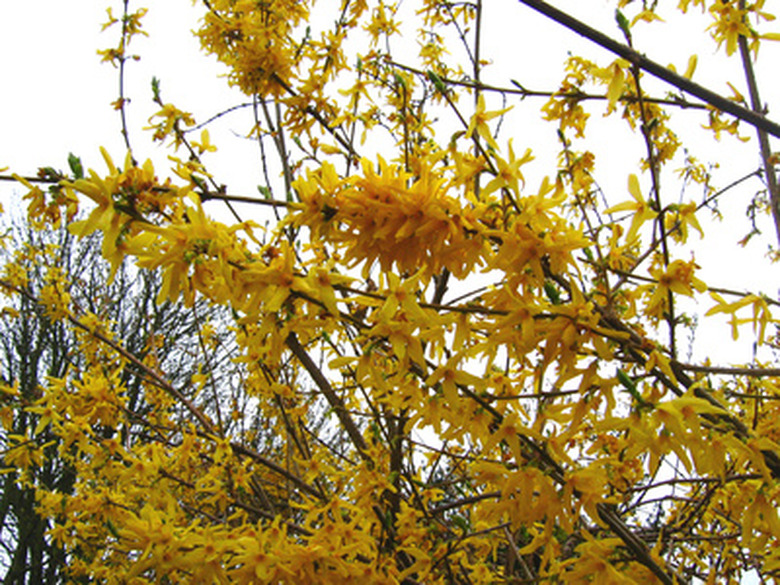Pests Of The Forsythia Bush
The forsythia bush (Forsythia x intermedia) is an early harbinger of spring, with its cherry yellow blooms often peeking through the last of the snow in northern gardens. These large, fast-growing shrubs are easy to grow. They need only full sun, well-drained soil and occasional pruning to keep them happy. While some gardeners may say it's impossible to damage a forsythia, some pests can afflict even these toughest of landscape shrubs.
Aphids
Aphids are a common, but rarely fatal, problem for young forsythias. These bugs have soft, pear-shaped bodies that can be brown, gray, yellow, black, green or red. Aphids cluster on the bottoms of young leaves, unopened flower buds and new stems. They leave behind their waste, called honeydew, a clear liquid that can coat the shrub and lead to the development of sooty mold. If the aphid population on your forsythia is not out of control, the University of Minnesota Extension recommends letting the bugs' natural enemies, such as parasitic wasps, ladybugs and green lacewings, control them. You also can try spraying your shrub with high-pressure water from the hose.
- The forsythia bush (Forsythia x intermedia) is an early harbinger of spring, with its cherry yellow blooms often peeking through the last of the snow in northern gardens.
- If the aphid population on your forsythia is not out of control, the University of Minnesota Extension recommends letting the bugs' natural enemies, such as parasitic wasps, ladybugs and green lacewings, control them.
Plant Bugs
The fourlined plant bug (Poecilocapsus lineatus) and the tarnished plant bug (Lygus lineolaris) lay eggs in the forsythia's soft stems. The young bugs hatch in mid-May and suck the sap out of the shrub's tender leaves. Symptoms include sunken areas around the puncture holes that start as transparent circles and become circular holes. The yellow-green fourlined plant bug has four black stripes alternating with three green stripes on its wings. The back of the mottled-brown tarnished plant bug has a yellow Y pattern. To get rid of the pests, the Connecticut Agricultural Experiment Station recommends spraying with azadirachtin, malathion, ultrafine horticultural oil or insecticidal soap.
Two-Banded Japanese Weevil
The two-banded Japanese weevil (Callirhopalus bifasciatus) eats the forsythia's leaf margins (edges), leaving behind crescent-shaped notches. The weevil, which comes in varying shades of brown, has faint white lines on its wing covers and whitish spots on its rear. The Connecticut Agricultural Experiment Station recommends spraying with acephate in early August only if you see many of the adults and your forsythia is severely damaged.
- The fourlined plant bug (Poecilocapsus lineatus) and the tarnished plant bug (Lygus lineolaris) lay eggs in the forsythia's soft stems.
- The Connecticut Agricultural Experiment Station recommends spraying with acephate in early August only if you see many of the adults and your forsythia is severely damaged.
